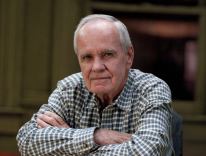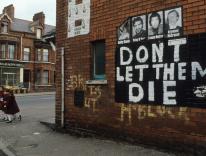The fiction of the Norwegian writer, Per Petterson, particularly his Out Stealing Horses, published almost a decade ago, has received general critical acclaim. Character, setting, mood and landscape open up a world familiar and strange. When I read him, I find a singular point of view, a consciousness shaped in a world in extremis – and all the more dramatically powerful for that.
The phrase, “I refuse” occurs three times by my count in Petterson’s new novel of the same name. It is spoken as an encouraging assertion of life over death – as in “I refuse to die.” So Tommy, one of the chief characters, to his mortally sick, adoptive father Jonsen – who dies soon after. It is also a denial of family or marital obligation. Tommy refuses to bear responsibility for his aged, abusive, real father; and a waitress, Berit, refuses to wear her wedding ring, despite her husband’s demands, to free herself for an assignation with Tommy. Refusing becomes a form of independence, an assertion of the self, against the constraints of family ties, vows, or the menace of death. In their contexts, the refusals seem desperate, and ultimately unfulfilling. The sources or motivation for the decisions “to refuse” lie unexplored, rather stated as facts. The Norwegian world of Per Petterson is not simply physically chilling, but deeply emotionally so.
This is a complex and teasing narrative, built around sharp disjunctures in time sequence and narrative voice. First person accounts by the two principals, Tommy and Jim, extremely close boyhood friends, reveal their chance meeting at the very beginning of the novel. They have not seen each other for over thirty-five years. There are third person accounts of the events that caused the break in their friendship and reveal how Tommy’s mother disappeared and how he came to be raised by Jonsen. Siri, Tommy’s sister, recounts her brief romance with Jim, and his painful, inexplicable rejection of her.
The plot, if plot there is, takes its energy from the first, chance meeting, and through time shifts, alternation of voices, works its way to the frustration of any future meeting, and suggests the major theme of the novel – the isolation of each of us, and the corresponding inability to know the other person. Deeper still, Jim, whose adolescent ability in school, and his blond good looks, appear to set him apart and give him the advantage over his rough and unpredictable friend Tommy, suffers deep emotional depression, and scarcely survives a suicide attempt.
One typical Petterson scene points both to the inscrutability of motive and the lingering effects of guilt.
Jim and Tommy skate on a frozen lake, late in the evening. Jim speculates about friendship and asks Tommy if they will forever remain close. Then in the terrifying noise of the ice settling on the lake, the boys race for the shore, in fear of breaking though. Jim swipes Tommy aside, sends him sprawling backwards.
So whether he [Jim] meant to or not, he struck out with his right arm, and his hand in its mitten hit Tommy in the chest and knocked him backwards while Jim shot forwards, and Tommy was sent flying on to the frozen lake and landed on his knees and slid for a few metres more and sat there finally with his elbows on the ice and his hands in the air watching Jim and his back, as he reached the shore.
The passage separates Jim’s consciousness from his action – “whether he meant to or not.” We read that “His hand hit” Tommy not “Jim hit Tommy,” as if to leave the motive indeterminate, but immediately they both climb to the safety of the land, Jim denies that he intended Tommy any harm. No cause and effect link is draw, but within two months, the precise narrative time frame tells us, Jim attempts suicide by hanging, and then spends months in “the bunker,” the psychiatric ward of a local hospital. He virtually sends Tommy away when he attempts to visit Jim. Again in a scene that points to a worrying indeterminacy in human action and motivation, Jim makes the likelihood of their continuing friendship turn on the toss of a coin.
Tommy’s later career success as a money manager leaves him wealthy and deeply unfulfilled. The meeting with Jim heightens that sense of wasted life, and he finds himself fantasizing about being like Chandler’s Philip Marlowe – the noir hero of his own mystery. Jim is no less affected by the meeting and his fate is left further, darkly unresolved. Only the section heading “The Last Night” offers us a sense of his ending.
It is through Petterson’s great gifts of story telling, and evocation of mood and place, that we find these character’s so interesting. Yes, we care about them and their own private battles that play out around each other, with only fumbling understanding of the actions they undertake.
There is one saving moment: visiting Jim in “the bunker,” Tommy cannot rediscover the Jim of the past in the fraught and apprehensive friend, but he remembers how they camped out one evening “on a ridge by a lookout tower.”
It never rained that night, and it didn’t snow, and Jim lay beside me, sleeping soundlessly with heather in his hair, and when I leaned over he wasn’t dead, and each time I went back to sleep, we were fifteen years old, and there was nothing wrong in this world.
The understated pathos of this novel provokes a willing compassion, even as we are led to see the inevitable ends the principals pursue. But how little were their ends in their beginnings, yet darkly how much was character their fate.
Please email comments to [email protected] and join the conversation on our Facebook page.
Share
Previous Story
Calvarium
Next Story
Celebrating Humility


